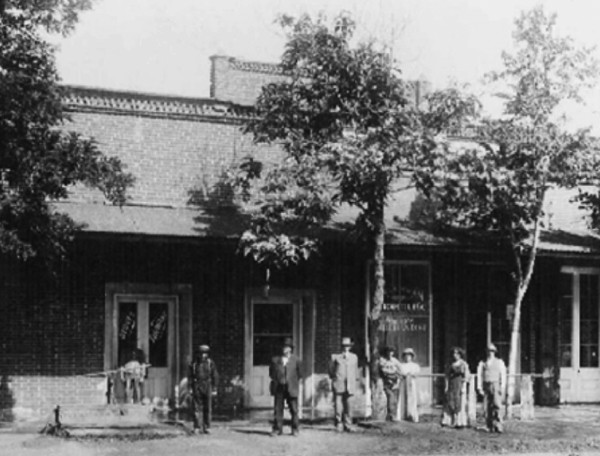Historic photo of Reichman’s Mercantile & General Merchandise Store in Fort Jones, California. Photo Courtesy Jenner Family Collection.
At the northern end of Scott Valley, Mr. O.C. Wheelock established one of the most important trading centers in the area. According to Harry L. Wells, a cabin, first built in 1851, presumably by Brown & Kelley, was sold to Wheelock and company. It was Wheelock, however, who took over the trading post and house of public “entertainment.” This station, also known at other times as Scottville, Scottsburg or Ottitiewa (which was the name of the Scott Valley branch of the Shasta Indians) was renamed Fort Jones in1860, was located beside what would become the major trail from Shasta (near Redding) to Yreka.
An interesting structure built in 1851, and still standing, was the Fort Jones House. In 1976, it was listed in the National Register of Historic Places. An important stage stop on the California-Oregon stage route, it was also a “pleasure house” used by soldiers garrisoned at the fort. The unique exterior was made to look like stonework.
Not far from Wheelock’s stood Fort Jones. Named for Colonel Roger Jones, Adjutant General of the Army from 1825-52, it was garrisoned by Company E 4th U.S. Infantry in October 1852, under Captain (Brevet Major) Edward H. Fitzgerald.
In the beginning there were only a couple of log buildings with dirt floors, but by 1854, there were nine structures. General George Crook, who later gained fame during the Civil War, was stationed at Fort Jones. It is said that General Ulysses S. Grant and Phillip Sheridan were also assigned duty at Fort Jones but never arrived.
The fort was dismantled in 1858 (but not officially abandoned until1866). Today nothing remains of the fort except a house that was moved into town and converted into a residence.
The first church in Fort Jones was the Methodist Church. Built in 1873 on the flat below Dr. Cabiness’ residence, it was dedicated in June 1874. The Fort Jones Roman Catholic Church held its first services in a hall under the direction of Father Farley; construction of a church didn’t begin until 1881 when Israel S. Mathews, one of Scott Valley’s earliest pioneers, donated a piece of land. In 1893, the Fort Jones Episcopal Church was erected on the corner of Main and Sterling Streets. Unfortunately, membership declined and the building was sold to the city. It was later torn down.
Fort Jones prospered as merchants, ranchers, and miners prospered. The Diggles’ brothers built the first store and the first brick structure in the valley. Then, after parting company, Henry, in company with others, built the first steam flouring mills that serviced the valley and adjoining mining districts. Another enterprising pioneer was A. B. Carlock who established Scott Valley Bank, which remains the oldest continuous independent bank in California.
